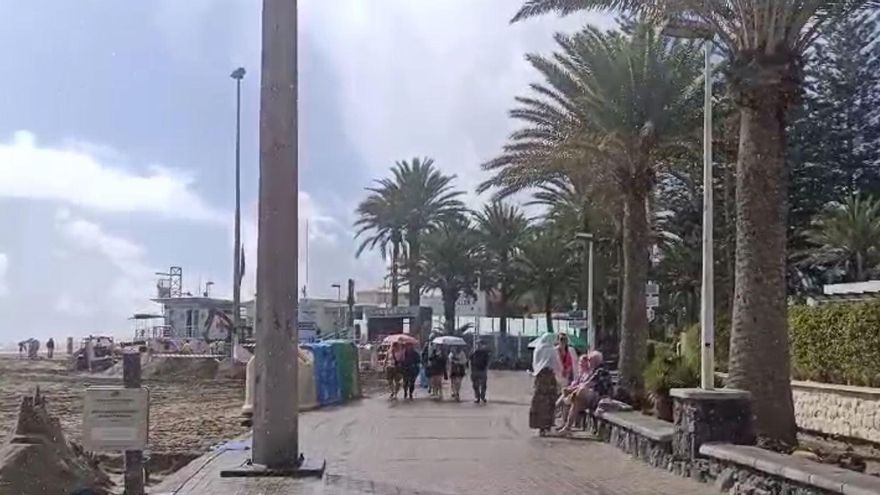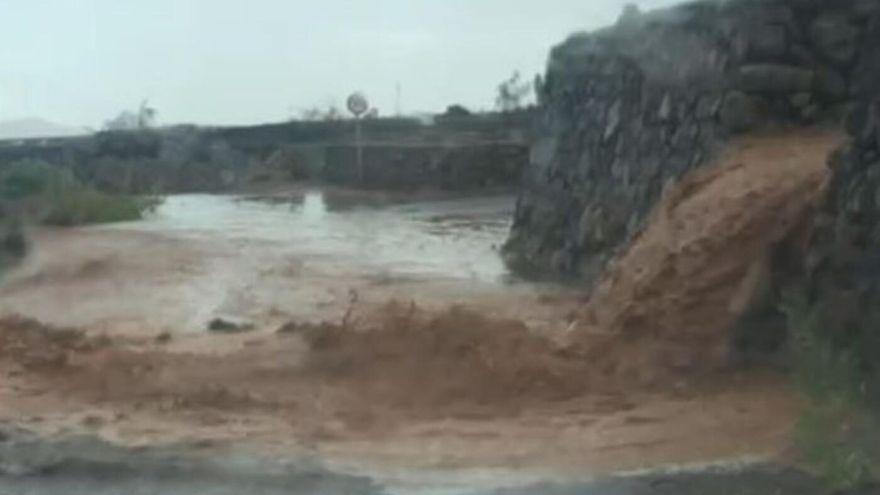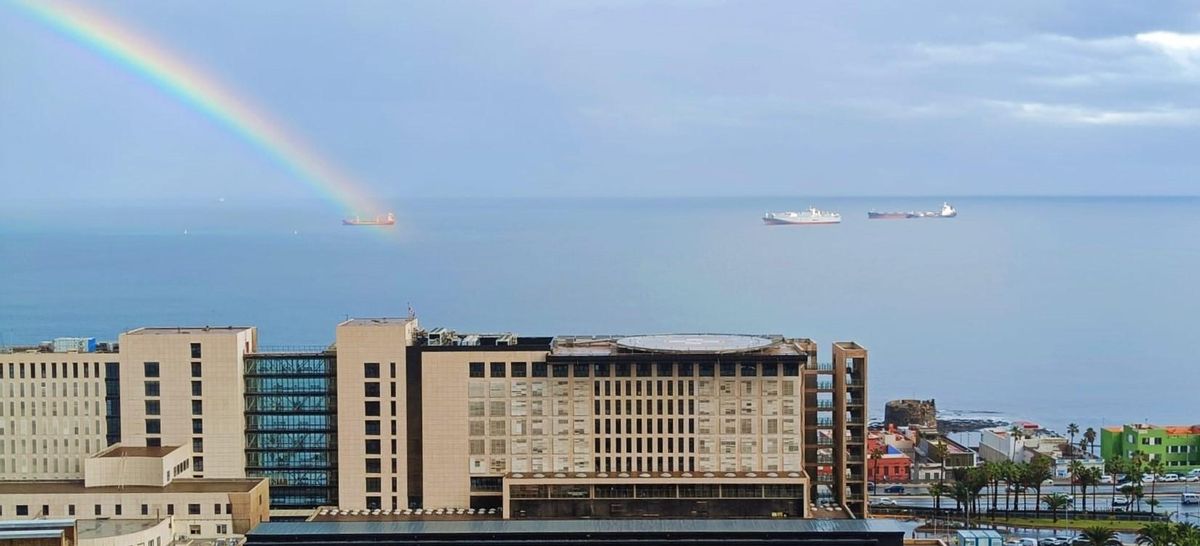The Herreño legend of Garoe, the tree that brings prosperity through water to its inhabitants, came to fruition this Wednesday. However, it was not the storm known as the sacred bimbache linden – the first to carry a name linked to the Canary Islands – that accomplished this feat. Instead, it was a Dana system that had been “detached” and cleverly positioned near the Canary Islands to benefit from the storm’s weakening, resulting in heavy rainfall, over 800 lightning strikes, a significant drop in temperatures, and even a light snowfall on Teide.
Contrary to the forecasts – and even pre-alerts – of a storm throughout the Archipelago, the skies awakened this Wednesday with magnificent clearings and a brilliant Sun that seemed determined to continue its shine. The State Meteorological Agency (Aemet) had anticipated that rain would commence in the morning. And indeed, it did, but exclusively on the island of La Palma, where early morning rainfall exceeded 30 litres per square metre in certain areas, such as the summit or the locality of Los Llanos. In fact, within just one hour, rainfall reached 10.2 litres per square metre, making it one of the wettest spots across the entire Canary Islands.

Adzubenam Villullas
The Dana progressed throughout the morning to the other islands, accompanied by a dense layer of dark clouds which heralded an abrupt weather shift. In Tenerife, heavy rains began around midday, catching many residents and tourists off guard. With sporadic but intense showers throughout the day, rainfall also exceeded 25 litres per square metre in just a few hours. The northern area of Tenerife was one of the hardest-hit locations, with La Victoria de Acentejo accumulating 26.4 litres per square metre whilst San Juan from La Rambla recorded 20.4 litres per square metre.
The first flakes of the year
In the summits of Tenerife, the combination of low temperatures and precipitation resulted in the first snowflakes of the year. Although the slopes of Teide had already been dusted with snow this winter following the Christmas snowfall, this Dana has added a refreshed white blanket.
With the cold clouds of Dana surrounding the Teide National Park, the temperature at the summit dipped to approximately 0.3 degrees at 1:50 p.m. A light precipitation measured at just 2.4 litres per square metre was enough to accompany a swift temperature drop (which fell 4 degrees in just one hour) resulting in light snow.
The summits of Tenerife were not the only areas to experience a sudden temperature decline. In Roque de Los Muchachos (La Palma), temperatures reached a low of 1.3 degrees at 4:00 p.m., while in Vega de San Mateo (Gran Canaria), thermometers struggled to reach 10 degrees throughout the day.

The Province
The storm was also marked by a prolific electrical display that resonated throughout the morning. In total, over 800 lightning strikes were recorded around the Canary Islands during the day, with the most significant activity occurring between 11:00 and 16:00.
The winds also made their presence felt. Although they were not particularly strong on the coast or midlands, gusts reached up to 89 kilometres per hour and sustained winds peaked at 77 kilometres per hour.

Rainbow in Las Palmas de Gran Canaria this Wednesday, January 22, 2025 / The Province
Forecast for this Thursday
The rain and cold are expected to dominate Thursday across the higher islands. The State Meteorological Agency (Aemet) does not rule out the possibility of locally heavy showers in the northern regions of La Palma during the first half of the day, which could be more persistent and even bring hail. The Aemet maintains a yellow warning due to rainfall and coastal phenomena on La Palma in the morning, while retracting storm alerts for the other islands.

Laura de Pablo
In both the La Palma summit and in Tenerife, rain may transition into snow. Temperatures are expected to continue their downward trend, particularly in the northeast regions of Gran Canaria and on the eastern coasts of the other eastern islands.
Looking towards the weekend, Aemet anticipates a period of stability for the Canary Islands; however, large clearings may still not become established, and a few light showers are still possible.
















